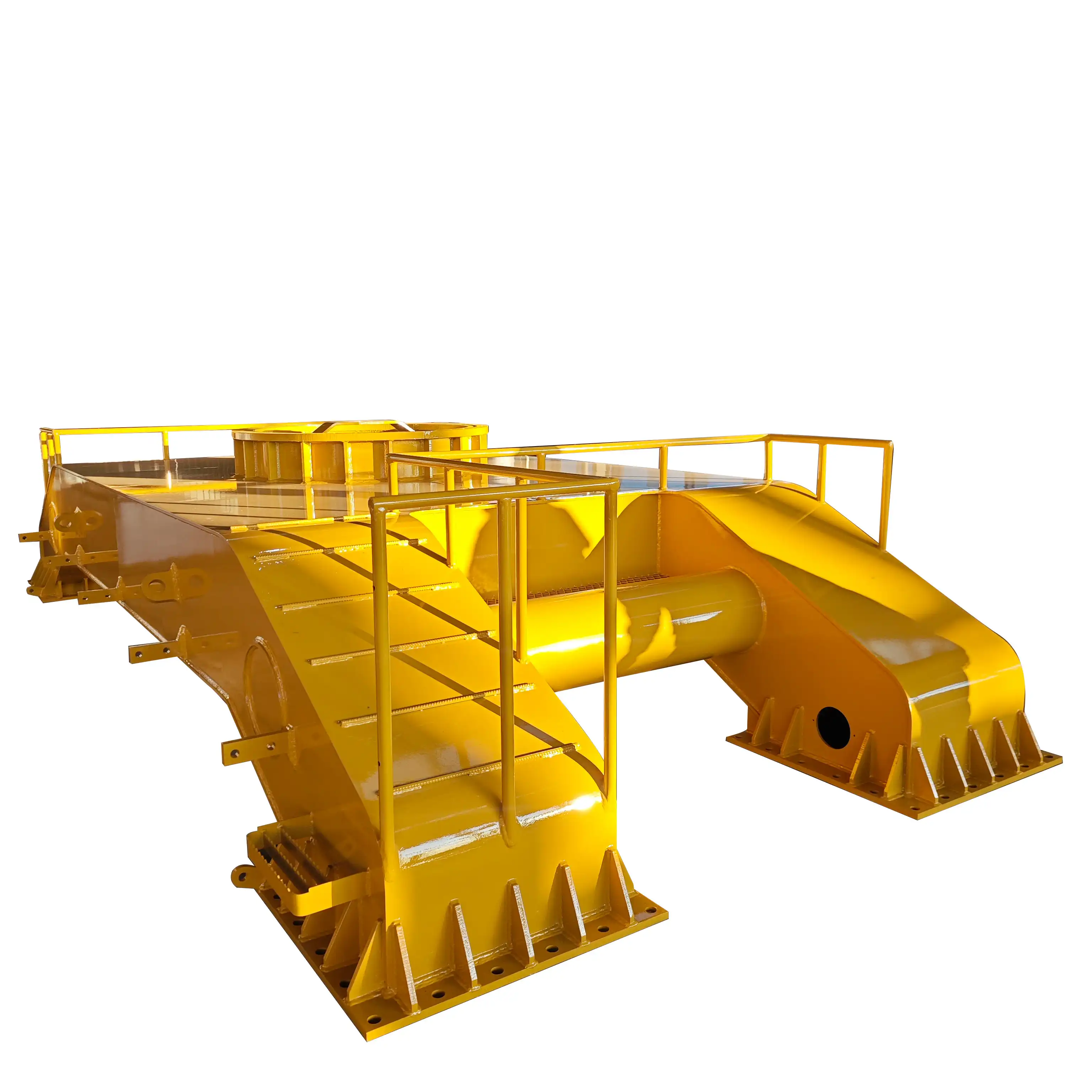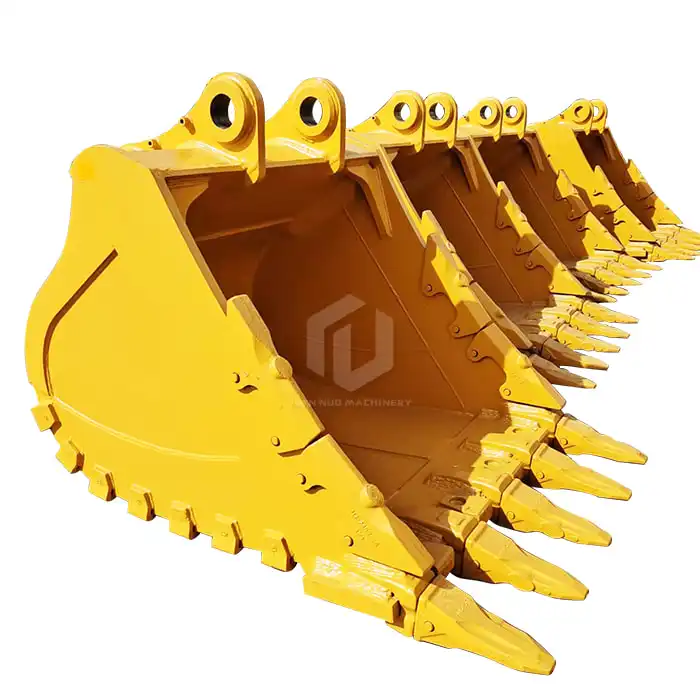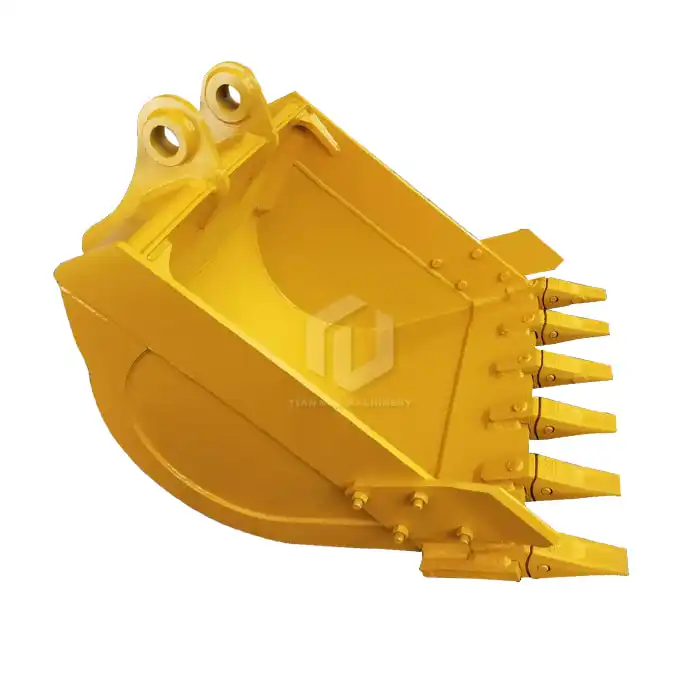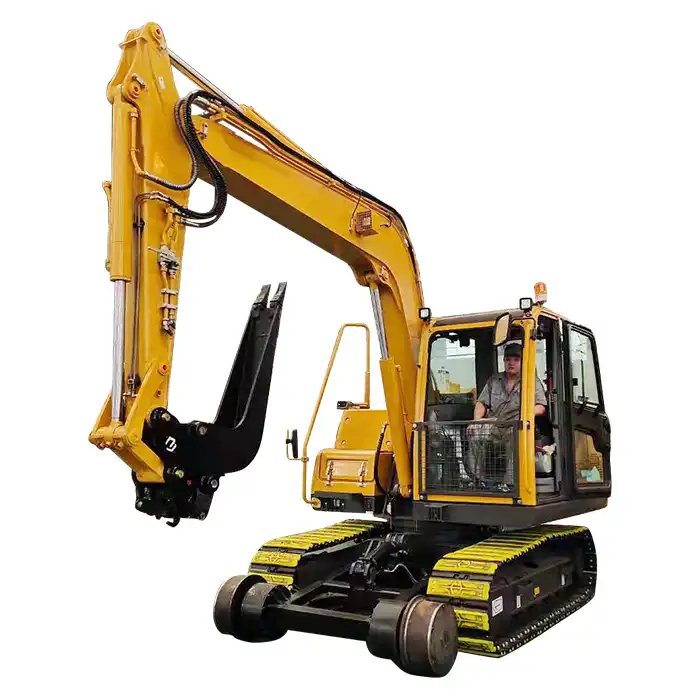What types of rotating mechanisms are there for rotating excavator buckets?
Rotating excavator buckets have revolutionized the construction and excavation industry, offering enhanced versatility and efficiency in various applications. These innovative attachments allow operators to manipulate the bucket's position with greater precision, making them invaluable tools for tasks such as grading, trenching, and slope work. In this comprehensive guide, we'll explore the different types of rotating mechanisms used in excavator buckets, their functionalities, and how they impact performance.

What Are the Main Types of Rotating Mechanisms Used in Excavator Buckets?
Rotating excavator buckets employ various mechanisms to achieve their 360-degree rotation capability. The two primary types of rotating mechanisms are hydraulic and mechanical systems. Each type has its unique characteristics, advantages, and applications in the construction industry.
Hydraulic rotating mechanisms utilize hydraulic power from the excavator's existing hydraulic system to facilitate bucket rotation. These systems typically consist of hydraulic motors, valves, and cylinders that work in tandem to provide smooth and controlled rotation. Hydraulic rotating mechanisms are known for their precise control and ability to handle heavier loads, making them ideal for more demanding applications.
On the other hand, mechanical rotating mechanisms rely on gears, bearings, and other mechanical components to enable bucket rotation. These systems often use a worm gear or planetary gear arrangement to achieve the desired rotational motion. Mechanical rotating mechanisms are generally simpler in design and may require less maintenance compared to their hydraulic counterparts.
Both hydraulic and mechanical rotating mechanisms can be further classified based on their specific designs and functionalities. Some common subtypes include:
- Continuous rotation systems: These allow for unlimited 360-degree rotation in both directions.
- Limited rotation systems: These provide a restricted range of rotation, typically up to 180 degrees in each direction.
- Tilt-rotate systems: These combine rotational capability with a tilting function, offering even greater flexibility in bucket positioning.
The choice between these different types of rotating mechanisms depends on factors such as the intended application, required precision, and budget constraints.
How Do Hydraulic and Mechanical Rotating Mechanisms Differ?
While both hydraulic and mechanical rotating mechanisms serve the same primary purpose of enabling bucket rotation, they differ significantly in their operation, performance characteristics, and suitability for various applications.
Hydraulic rotating mechanisms offer several advantages:
- Precise control: Hydraulic systems allow for smooth and accurate bucket positioning, which is crucial for tasks requiring high precision.
- High torque output: They can generate substantial rotational force, making them suitable for heavy-duty applications.
- Variable speed control: Operators can easily adjust the rotation speed to suit different tasks and materials.
- Integration with existing systems: Many excavators already have hydraulic systems in place, simplifying the integration of hydraulic rotating buckets.
However, hydraulic systems also have some drawbacks:
- Complexity: They involve more components, which can lead to higher maintenance requirements and potential for hydraulic leaks.
- Cost: Hydraulic rotating mechanisms are generally more expensive than mechanical alternatives.
- Weight: The additional hydraulic components can add significant weight to the excavator attachment.
Mechanical rotating mechanisms, in contrast, offer their own set of advantages:
- Simplicity: With fewer moving parts, mechanical systems are often easier to maintain and repair.
- Cost-effectiveness: They are typically less expensive to manufacture and purchase.
- Reliability: The simpler design can lead to increased durability and longevity in certain applications.
- Lightweight: Mechanical systems generally weigh less than their hydraulic counterparts, which can be beneficial for smaller excavators.
However, mechanical rotating mechanisms also have limitations:
- Limited torque: They may not be suitable for applications requiring high rotational force.
- Fixed rotation speeds: Unlike hydraulic systems, mechanical mechanisms often have a set rotation speed that cannot be easily adjusted.
- Wear and tear: The gears and bearings in mechanical systems may experience more wear over time, especially in high-load applications.
Understanding these differences is crucial for selecting the most appropriate rotating mechanism for a specific excavator and application.
How Does the Rotating Mechanism Affect the Performance of an Excavator Bucket?
The choice of rotating mechanism significantly impacts the overall performance and capabilities of an excavator bucket. Here are several key ways in which the rotating mechanism influences bucket performance:
1. Versatility: Rotating mechanisms greatly enhance the versatility of excavator buckets. They allow operators to tackle a wider range of tasks without repositioning the entire machine, improving efficiency and reducing downtime. For example, a rotating bucket can easily transition from digging to grading or slope work with minimal adjustment.
2. Precision: The type of rotating mechanism directly affects the level of precision an operator can achieve. Hydraulic systems, with their smooth and controlled rotation, often provide superior accuracy in positioning the bucket. This precision is particularly valuable in applications such as finish grading or working in confined spaces.
3. Productivity: By enabling operators to work from various angles without repositioning the excavator, rotating mechanisms can significantly boost productivity. This is especially true for continuous rotation systems, which allow for unlimited 360-degree movement.
4. Load Handling: The rotating mechanism's design influences the bucket's load-bearing capacity and stability during rotation. Hydraulic systems typically offer better performance in handling heavier loads due to their higher torque output.
5. Energy Efficiency: The type of rotating mechanism can impact the excavator's overall energy efficiency. Hydraulic systems may consume more power from the excavator's engine, while mechanical systems might be more energy-efficient in certain applications.
6. Maintenance Requirements: The complexity of the rotating mechanism affects the frequency and cost of maintenance. Hydraulic systems, with their additional components, may require more regular maintenance compared to simpler mechanical systems.
7. Adaptability: Some rotating mechanisms, particularly those with tilt functions, provide greater adaptability to varying terrain and working conditions. This adaptability can significantly enhance the excavator's performance across different job sites.
8. Operator Comfort: The smoothness and control offered by the rotating mechanism can impact operator comfort and reduce fatigue during extended periods of operation. This, in turn, can lead to improved overall performance and productivity.
9. Safety: Advanced rotating mechanisms often incorporate safety features such as overload protection and controlled rotation speeds, which can enhance workplace safety and prevent accidents.
10. Cost-Effectiveness: While the initial cost of a rotating excavator bucket may be higher, the increased versatility and productivity can lead to better cost-effectiveness over time, especially for contractors handling diverse projects.
By carefully considering these factors, construction professionals can select the most appropriate rotating mechanism to optimize their excavator bucket's performance for specific applications and working conditions.
Rotating Excavator Bucket Made In China
The rotating excavator bucket has become an indispensable tool in modern construction and excavation projects. Whether opting for a hydraulic or mechanical rotating mechanism, the enhanced versatility and efficiency offered by these innovative attachments can significantly improve project outcomes and operator productivity.
For those in the market for a high-quality rotating excavator bucket, Tiannuo Machinery offers an exceptional 360-degree rotating hydraulic tilt ditching bucket. This advanced attachment boasts impressive specifications, including:
- Rotation: 360 degrees
- Incline: 45 degrees
- Applicable Host Machine: 7-15 tons
- Bucket Capacity: 0.4 m³
If you're looking for a reliable manufacturer of rotating hydraulic tilt ditching buckets, we invite you to contact our team at Tiannuo Machinery. Our experienced professionals are ready to assist you in finding the perfect solution for your excavation needs. Reach out to our manager at arm@stnd-machinery.com, or connect with our team members at rich@stnd-machinery.com and tn@stnd-machinery.com. Let us help you enhance your excavation capabilities with our state-of-the-art rotating excavator buckets.
References:
- Construction Equipment Guide. (2021). "Rotating Buckets Increase Excavator Versatility." Retrieved from www.constructionequipmentguide.com
- Komatsu. (2020). "Hydraulic Attachments for Construction Equipment." Technical handbook.
- Journal of Construction Engineering. (2019). "Impact of Excavator Attachments on Project Efficiency." Vol. 45, Issue 3.

_1740558626327.webp)







